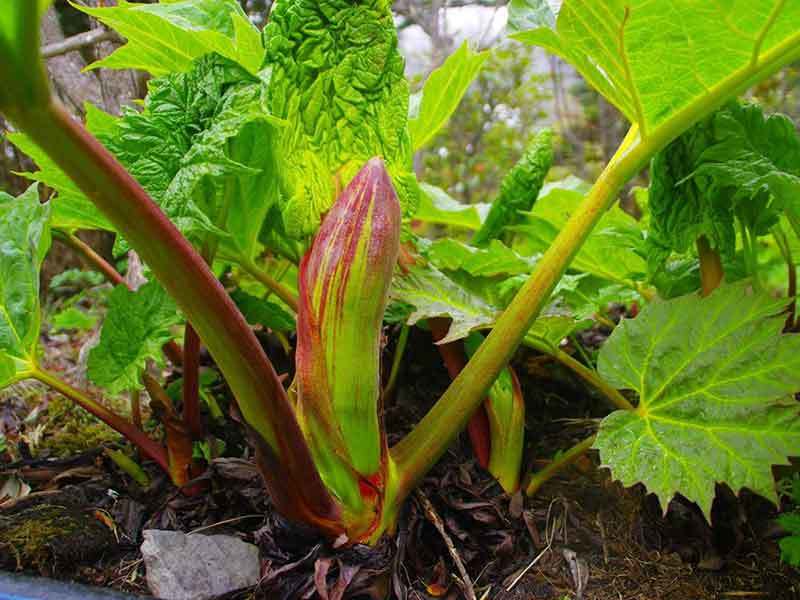A Comprehensive Guide to Growing Rhubarb in Texas
Introduction
Will rhubarb grow in Texas? Absolutely. Here's a quick guide to getting your own patch of this fruitful foliage started.
Understanding Rhubarb
What is Rhubarb?
Rhubarb is a perennial vegetable. It has stalks that range from green to shades of deep red. But rhubarb is treated as an annual plant in Texas.
Rhubarb Varieties Suited for Texas
The Victoria variety is perhaps the most popular and successful in Texas. It has bright red stalks and an excellent flavor. Chipman's Canada Red is also a strong contender, sporting dark red stalks. It is being more resistant to bolting in warm climates.
Climate and Soil Requirements
Ideal Climate Conditions
Does rhubarb grow in Texas? The ideal conditions for rhubarb revolve around cool temperatures. They are more prevalent in the northern and central parts of the state. Rhubarb thrives with the longer growing seasons these areas offer. It prefers temperatures between 40 and 75 degrees Fahrenheit, tolerating some frost.
Soil Preferences
You should use well-draining soil, and slightly acidic, with a pH between 6.0 and 6.8. Texas soils can vary widely, so it may be necessary to amend your soil with compost and peat moss. These can improve its texture and pH.
Rhubarb requires a soil depth of 18 to 24 inches for its deep root system. This is crucial for anchoring the plant and ensuring a good supply of nutrients.
Proper Drainage
In Texas, heavy rain can be a common occurrence. Ensuring good drainage is particularly crucial. To prevent waterlogging in your rhubarb bed, consider raised garden beds or incorporate sand into the soil mix.
How to Grow Rhubarb in Texas?
Best Time to Plant Rhubarb in Texas
The best time to plant rhubarb in Texas is during the cool months. August to May is ideal once the soil is workable. This gives the plant time to establish a strong root system before the Texas heat kicks in.
Spacing Requirements
Rhubarb is not keen on crowding, at all. Space each plant about 3 to 4 feet away from others. This ensures plenty of room for expansion.
Step-by-Step Guide to Planting Rhubarb in Texas
Choose a location with well-draining soil and partial shade in the afternoon. Dig a hole twice as wide and just as deep as the rhubarb crown. Mix in compost or well-rotted manure with the soil at the bottom of the hole.
Place the crown in the hole with the buds pointing upwards. Backfill the hole, leaving the crown's tip just above the surface. Water thoroughly and apply a layer of mulch around the plant to preserve moisture.

Care and Maintenance
Watering Needs
Rhubarb plants prefer consistently moist soil but should not sit in water. Water your plants deeply once or twice a week. This depends on rainfall and the dryness of your soil. If you're unsure when to water, stick your finger into the soil near the plants. If it's dry about an inch below the surface, it's time to water.
Fertilization Requirements
Rhubarb is a heavy feeder. Fertilize your rhubarb in early spring with a balanced fertilizer. For example, a 10-10-10. Scatter the fertilizer around the base of the plant and water it in. Be careful not to apply too much nitrogen. This can result in lots of leafy growth at the expense of the stalks.
Weed Control
Rhubarb plants don't like competition. So keep the area around your plants free of weeds. A layer of mulch can help with this. They also conserve soil moisture and keep the soil temperature more moderate.
Common Problems and Solutions
Common Diseases
Rhubarb can be prone to fungal diseases. For example, root rot and crown rot. To prevent these, ensure your plants are in well-drained soil, and avoid overwatering. Space them adequately, so air circulation prevents the growth of fungus.
Common Pests
Common pests include Rhubarb curculio, slugs, and spider mites. Regularly inspecting your plants can help you spot the problem early. Hand-picking can work for earwigs and slugs. You can manage spider mites with a strong blast of water or insecticidal soap.
If you do notice pests, use organic controls to keep them at bay. For example, neem oil and insecticidal soaps. Remember to never use pesticides while the plant is in flower. This is harmful to pollinators like bees.
Other Issues
Sometimes, rhubarb can develop stringiness in the stalks. This is usually due to extreme temperature fluctuations or a nutrient imbalance. Ensure your plants are in a stable, comfortable environment. Try adjusting your fertilization schedule.
Harvesting Rhubarb
When Is Rhubarb in Season in Texas?
Rhubarb reaches a respectable size by about March or April. You can harvest a rhubarb plant through May. Stalks should be thick and tall, with a deep red color for the red varieties and a light green color for the green types.
Don't harvest any stalks in the first planting year, and only a few in the second. This encourages the plant to grow more vigorously in subsequent years.
The Harvesting Process
To harvest, grasp the stalk near the base. Pull it away from the plant with a gentle twist. Never cut the stalks with a knife. This can introduce disease. Leaves are poisonous and should be discarded, never consumed.
Maximizing Yield
To maximize yield, harvest sparingly in the second season. However, by the third season, you should be able to enjoy a more robust harvest. Remove any flower stalks as soon as you notice them. Because they can deplete the plant's energy.
Preservation Techniques
You can enjoy fresh rhubarb. You can also preserve them for later use by freezing or canning. If you're concerned about plant health, leave plenty of stalks on the plant. Excessive harvesting can weaken the plant over time.
Conclusion
Can you grow rhubarb in Texas? You should understand the unique needs of rhubarb. Taking the appropriate measures to protect it from Texas's intense climate. Patience and diligence are the key ingredients to a successful growing rhubarb in Texas.

